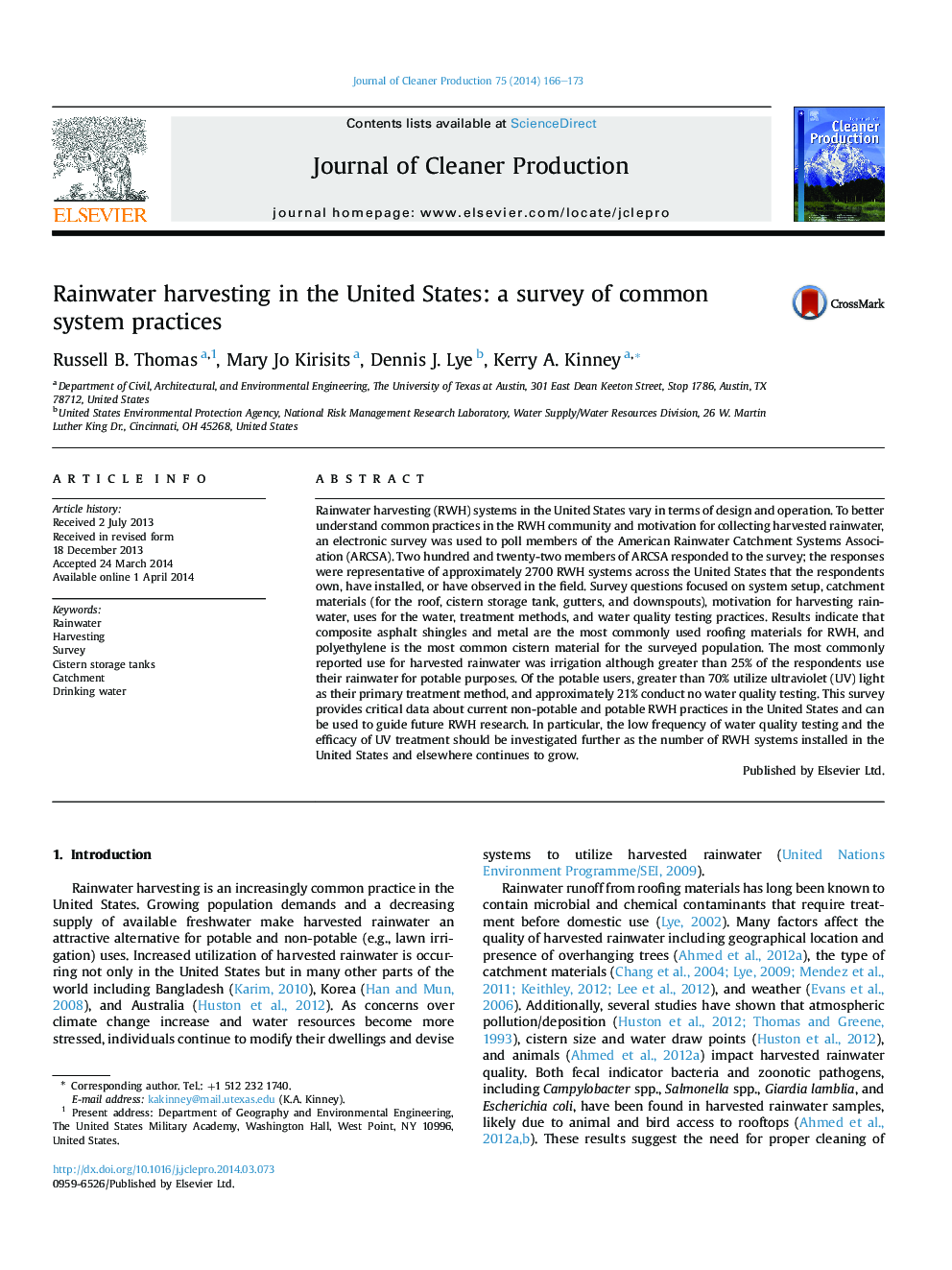| کد مقاله | کد نشریه | سال انتشار | مقاله انگلیسی | نسخه تمام متن |
|---|---|---|---|---|
| 1744861 | 1522171 | 2014 | 8 صفحه PDF | دانلود رایگان |
• We surveyed 222 rainwater harvesters in the United States.
• Common rainwater harvesting practices were assessed.
• The most commonly reported use for harvested rainwater was irrigation.
• Ultraviolet light disinfection of harvested rainwater was common for potable use.
Rainwater harvesting (RWH) systems in the United States vary in terms of design and operation. To better understand common practices in the RWH community and motivation for collecting harvested rainwater, an electronic survey was used to poll members of the American Rainwater Catchment Systems Association (ARCSA). Two hundred and twenty-two members of ARCSA responded to the survey; the responses were representative of approximately 2700 RWH systems across the United States that the respondents own, have installed, or have observed in the field. Survey questions focused on system setup, catchment materials (for the roof, cistern storage tank, gutters, and downspouts), motivation for harvesting rainwater, uses for the water, treatment methods, and water quality testing practices. Results indicate that composite asphalt shingles and metal are the most commonly used roofing materials for RWH, and polyethylene is the most common cistern material for the surveyed population. The most commonly reported use for harvested rainwater was irrigation although greater than 25% of the respondents use their rainwater for potable purposes. Of the potable users, greater than 70% utilize ultraviolet (UV) light as their primary treatment method, and approximately 21% conduct no water quality testing. This survey provides critical data about current non-potable and potable RWH practices in the United States and can be used to guide future RWH research. In particular, the low frequency of water quality testing and the efficacy of UV treatment should be investigated further as the number of RWH systems installed in the United States and elsewhere continues to grow.
Figure optionsDownload as PowerPoint slide
Journal: Journal of Cleaner Production - Volume 75, 15 July 2014, Pages 166–173
